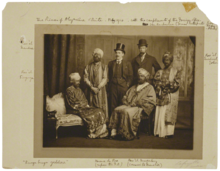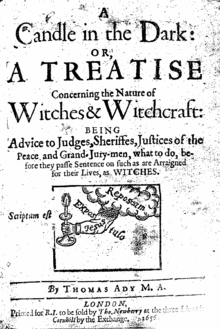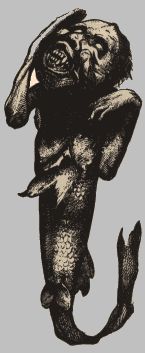Hoax

A hoax is a deliberately fabricated falsehood made to masquerade as truth.[1] It is distinguishable from errors in observation or judgment,[1] or rumors, urban legends, pseudosciences or April Fools' Day events that are passed along in good faith by believers or as jokes.[2]
Etymology
The English philologist Robert Nares (1753–1829) says that the word hoax was coined in the late 18th century as a contraction of the verb hocus, which means "to cheat",[3] "to impose upon"[3] or "to befuddle often with drugged liquor".[4] Hocus is a shortening of the magic incantation hocus pocus,[4] whose origin is disputed.[5]
Definition


Robert Nares defined the word hoax as meaning "to cheat", dating from Thomas Ady's 1656 book A candle in the dark, or a treatise on the nature of witches and witchcraft.[6]
The term hoax is occasionally used in reference to urban legends and rumors, but the folklorist Jan Harold Brunvand argues that most of them lack evidence of deliberate creations of falsehood and are passed along in good faith by believers or as jokes, so the term should be used for only those with a probable conscious attempt to deceive.[2] As for the closely related terms practical joke and prank, Brunvand states that although there are instances where they overlap, hoax tends to indicate "relatively complex and large-scale fabrications" and includes deceptions that go beyond the merely playful and "cause material loss or harm to the victim".[7]
According to Professor Lynda Walsh of the University of Nevada, Reno, some hoaxes—such as the Great Stock Exchange Fraud of 1814, labeled as a hoax by contemporary commentators—are financial in nature, and successful hoaxers—such as P. T. Barnum, whose Fiji mermaid contributed to his wealth—often acquire monetary gain or fame through their fabrications, so the distinction between hoax and fraud is not necessarily clear.[8] Alex Boese, the creator of the Museum of Hoaxes, states that the only distinction between them is the reaction of the public, because a fraud can be classified as a hoax when its method of acquiring financial gain creates a broad public impact or captures the imagination of the masses.[9]
One of the earliest recorded media hoaxes is a fake almanac published by Jonathan Swift under the pseudonym of Isaac Bickerstaff in 1708.[10] Swift predicted the death of John Partridge, one of the leading astrologers in England at that time, in the almanac and later issued an elegy on the day Partridge was supposed to have died. Partridge's reputation was damaged as a result and his astrological almanac was not published for the next six years.[10]
It is possible to perpetrate a hoax by making only true statements using unfamiliar wording or context, such as in the Dihydrogen monoxide hoax. Political hoaxes are sometimes motivated by the desire to ridicule or besmirch opposing politicians or political institutions, often before elections.
A hoax differs from a magic trick or from fiction (books, movies, theatre, radio, television, etc.) in that the audience is unaware of being deceived, whereas in watching a magician perform an illusion the audience expects to be tricked.
A hoax is often intended as a practical joke or to cause embarrassment, or to provoke social or political change by raising people's awareness of something. It can also emerge from a marketing or advertising purpose. For example, to market a romantic comedy movie, a director staged a phony "incident" during a supposed wedding, which showed a bride and preacher getting knocked into a pool by a clumsy fall from a best man.[11] A resulting video clip of Chloe and Keith's Wedding was uploaded to YouTube and was viewed by over 30 million people and the couple was interviewed by numerous talk shows.[11] Viewers were deluded into thinking that it was an authentic clip of a real accident at a real wedding; but a story in USA Today in 2009 revealed it was a hoax.[11]
A borderline case between fiction and hoax is a 1938 radio broadcast by Orson Welles describing a Martian invasion of earth. Many people who tuned in without hearing the introduction of the program as fiction were concerned that the invasion was real. It has been suggested that Welles knew the schedule of a popular program on another channel, and scheduled the first report of the invasion to coincide with a commercial break in the other program so that people switching stations would be tricked.
Governments sometimes spread false information to assist them with aims such as going to war; the "Iraq dossier" is an example of this; these often come under the heading of black propaganda. There is often a mixture of outright hoax and suppression and management of information to give the desired impression. In wartime and times of international tension rumours abound, some of which may be deliberate hoaxes.
Examples of politics-related hoaxes:
- Belgium is a country with a Flemish-speaking region and a French-speaking region. In 2006 French-speaking television channel RTBF interrupted programming with a spoof report claiming that the country had split in two and the royal family had fled.
- On Saturday 13 March 2010 the Imedi television station in Georgia broadcast a false announcement that Russia had invaded Georgia.[citation needed]
Psychologist Peter Hancock has identified six steps which characterise a truly successful hoax:[12]
- Identify a constituency- a person or group of people who, for reasons such as piety or patriotism, or greed, will truly care about your creation.
- Identify a particular dream which will make your hoax appeal to your constituency.
- Create an appealing but "under-specified" hoax, with ambiguities
- Have your creation discovered.
- Find at least one champion who will actively support your hoax.
- Make people care, either positively or negatively – the ambiguities encourage interest and debate
Types of hoaxes
Hoaxes vary widely in their processes of creation, propagation, and entrenchment over time. For example, :
- Academic hoaxes
- Religious hoaxes
- Hoaxes perpetrated on occasions when their initiation is considered socially appropriate, such as April Fools' Day
- Criminal Hoaxing, such as the case of John Samuel Humble, aka Wearside Jack. Criminal hoaxing diverts time and money of police investigations with communications purporting to come from the actual criminal. Once caught, hoaxers are charged under criminal codes such as Perverting the course of justice.
- Anthropologists were taken in by the "Piltdown Man discovery" that was widely believed from 1913 to 1953
- Apocryphal claims that originate as a hoax gain widespread belief among members of a culture or organization, become entrenched as persons who believe it repeat it in good faith to others, and continue to command that belief after the hoax's originators have died or departed
- Hoaxes formed by making minor or gradually increasing changes to a warning or other claim widely circulated for legitimate purposes
- Hoaxes perpetrated by "scare tactics" appealing to the audience's subjectively rational belief that the expected cost of not believing the hoax (the cost if its assertions are true times the likelihood of their truth) outweighs the expected cost of believing the hoax (cost if false times likelihood of falsity), such as claims that a non-malicious but unfamiliar program on one's computer is malware
- Some urban legends and rumors with a probable conscious attempt to deceive[2]
- Humbugs
- Computer virus hoaxes became widespread as viruses themselves began to spread. A typical hoax is an email message warning recipients of a non-existent threat, usually forging quotes supposedly from authorities such as Microsoft and IBM. In most cases the payload is an exhortation to distribute the message to everyone in the recipient's address book. Thus the e-mail "warning" is itself the "virus". Sometimes the hoax is more harmful, e.g., telling the recipient to seek a particular file (usually in a Microsoft Windows operating system); if the file is found, the computer is deemed to be infected unless it is deleted. In reality the file is one required by the operating system for correct functioning of the computer.
- Internet hoaxes became more common after the start of social media. Some websites have been used to hoax millions of people on the Web.[13]
- A hoax of exposure is a semi-comical or private sting operation. It usually encourages people to act foolishly or credulously by falling for patent nonsense that the hoaxer deliberately presents as reality. A related activity is culture jamming.
- Art-world hoaxes:
- The "Bruno Hat" art hoax arranged in London in July 1929 involved staging a convincing public exhibition of paintings by an imaginary reclusive artist, Bruno Hat. All the perpetrators were well-educated and did not intend a fraud, as the newspapers were informed the next day. Those involved included Brian Howard, Evelyn Waugh, Bryan Guinness, John Banting and Tom Mitford.[14]
- Nat Tate: An American Artist 1928-1960: a 1998 art world hoax, by William Boyd
- Disumbrationism: a modern art hoax
- Pierre Brassau: exposing art critics to "modern paintings" made by a chimpanzee
- Spectra: A Book of Poetic Experiments: a modernist poetry hoax
See also
|
|
References
- ^ a b MacDougall, Curtis D. (1958). Hoaxes. Dover. p. 6. ISBN 0-486-20465-0.
- ^ a b c Brunvand, Jan H. (2001). Encyclopedia of Urban Legends. W. W. Norton & Company. p. 194. ISBN 1-57607-076-X.
- ^ a b Nares, Robert (1822). A glossary: or, Collection of words, phrases, names, and allusions to customs, proverbs, &c., which have been thought to require illustration, in the works of English authors, particularly Shakespeare, and his contemporaries ... p. 235.
- ^ a b "Merriam-Webster Dictionary: Hocus". Merriam-Webster. 2010. Retrieved 25 October 2010.
- ^ See the Hocus Pocus article for more detail.
- ^ a b Editors of the American Heritage Dictionaries (2006). More Word Histories and Mysteries: From Aardvark to Zombie. Houghton Mifflin Harcourt. p. 110. ISBN 0-618-71681-5.
{{cite book}}:|author=has generic name (help) - ^ Brunvand, Jan H. (1998). American Folklore: An Encyclopedia. Taylor & Francis. p. 587. ISBN 0-8153-3350-1.
- ^ Walsh, Lynda (2006). Sins Against Science: The Scientific Media Hoaxes of Poe, Twain, And Others. State University of New York Press. pp. 24–25. ISBN 0-7914-6877-1.
- ^ Boese, Alex (2008). "What Is A Hoax?". Retrieved 25 October 2010.
- ^ a b Walsh, Lynda (2006). Sins Against Science: The Scientific Media Hoaxes of Poe, Twain, And Others. State University of New York Press. pp. 17–18. ISBN 0-7914-6877-1.
- ^ a b c Ann Oldenburg (Oct 12, 2009). "Director: 'Chloe and Keith's Wedding' video is a hoax". USA Today. Retrieved 2011-03-05.
But today, we can tell you: it's definitely a hoax. Chloe and Keith are actors named Josh Covitt and Charissa Wheeler. They're not married.
{{cite news}}: Italic or bold markup not allowed in:|publisher=(help) - ^ Hancock, Peter (2015). Hoax Springs Eternal: The Psychology of Cognitive Deception. Cambridge U.P. pp. 182–195. ISBN 9781107417687.
- ^ "How serial hoaxers duped the Internet". Washington Post. 2014-09-24. Retrieved 2014-09-24.
- ^ "Leicester Galleries website on ''Bruno Hat'', accessed 28th May 2011". Leicestergalleries.com. Retrieved 2012-04-05.
Further reading
- Hoaxes, Curtis D. MacDougall, 1940, revised ed. 1958, Dover Publications.
External links
- The Culture Jammer’s Encyclopedia
- Snopes - Urban Legends Reference Pages
- The Greatest Hoaxes of All Time — slideshow by Life magazine
- "What's All This Hoax Stuff, Anyhow?" (Bob Pease article on Electronic Design website)
- Book: Extraordinary Popular Delusions and the Madness of Crowds, by Charles MacKay
- Chloe and Keith's Wedding hoax—link to video and commentary at USA Today
- Leyendas Urbanas - Urban Legends and Hoaxes in Spanish
- Indonesian Hoaxes - The Big List of Indonesian Hoax
